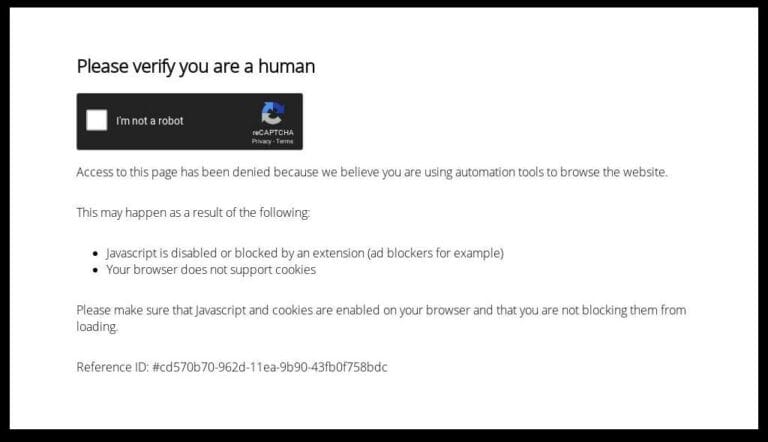Comprehensive Guide to Choosing the Best Website Monitoring Services for 2024
Picking the right website monitoring service for 2024 can seem like a big task. With so many options, it’s easy to feel lost. But don’t worry, this guide is here to help. We’ll break down what these services do, why they’re important, and how to choose the best one for your needs. By the end, you’ll have a clear idea of what to look for and how to get started. Let’s dive in and explore the world of website monitoring services together!
Key Takeaways
- Website monitoring services help keep your site running smoothly by checking for issues.
- These services are important for improving user experience and keeping your site secure.
- Different types of monitoring include uptime, performance, security, and transaction checks.
- Choosing the right service involves looking at your business needs, budget, and provider options.
- Future trends point to more AI and real-time data use in monitoring services.
Understanding Website Monitoring Services
What Are Website Monitoring Services?
Website monitoring services are like your site’s watchdogs. They keep an eye on your website’s performance, uptime, and security, making sure everything runs smoothly. These services check if your site is up and running or if there’s any hiccup. They can track how fast your pages load and if any part of your site is broken. Think of them as a safety net that catches issues before they become big problems.
Importance of Website Monitoring
Why bother with website monitoring? Well, it’s all about keeping your site in top shape. If your site goes down or slows to a crawl, you could lose visitors and revenue. Monitoring helps you spot these issues fast, so you can fix them before they hurt your business. Plus, it helps fortify security against cyber threats by spotting suspicious activities early. In short, it’s about peace of mind and protecting your online presence.
Key Features to Look For
When picking a website monitoring service, there are a few things to keep an eye out for:
- Uptime Monitoring: This checks if your site is online and reachable. Downtime can cost you, so this feature is a must.
- Performance Tracking: You want your pages to load quickly. Slow sites can drive users away.
- Security Alerts: Keeps you informed about potential threats or breaches.
- User Experience Monitoring: Understand how real users interact with your site.
- Reporting Tools: Get detailed insights into your site’s health and performance.
Monitoring your website is like having a reliable friend who always watches your back. They alert you to issues before they become disasters, ensuring your site remains a trusted space for visitors.
Top Benefits of Using Website Monitoring Services
Enhancing User Experience
Website monitoring services play a significant role in making sure visitors have a smooth experience. Nobody likes a slow website; it can turn people away faster than you think. With these services, you can spot issues early, like slow loading times or broken links, and fix them before they become a problem. This means happier visitors and, hopefully, more conversions. Think of it as a way to keep your site running like a well-oiled machine.
Boosting Website Performance
Keeping your website running smoothly is key to keeping users engaged. Monitoring services help you track various performance metrics, such as page load times and server response. By optimizing these areas, you can improve the speed and reliability of your site. Here’s a quick list of what you can track:
- Page load speed
- Server uptime
- Error rates
These services can also work hand-in-hand with website support services to enhance speed and performance, ensuring your site is always at its best.
Ensuring Security and Compliance
In today’s digital age, security is a top concern for any website owner. Monitoring services help you keep an eye on suspicious activities and potential threats, providing an extra layer of protection. They can alert you to unauthorized access attempts, helping you to act quickly and prevent data breaches. Plus, keeping your site secure also means staying compliant with various regulations, which is a must for any business handling sensitive information.
With the right monitoring in place, you can rest easy knowing your website is secure, fast, and ready to handle whatever comes its way.
Comparing Different Types of Website Monitoring Services
Uptime Monitoring
Uptime monitoring is all about keeping tabs on whether your website is up and running. Think of it like a watchdog that alerts you when your site goes down. This service is essential for maintaining your website’s reliability. With tools like Uptime.com, you can get instant notifications if there’s any disruption. Key benefits include:
- Immediate alerts for downtime
- Detailed reports on uptime history
- Tools to diagnose the cause of outages
Performance Monitoring
Performance monitoring digs into how fast and efficiently your website loads. Nobody likes a slow website, right? This type of monitoring checks things like load times, server response, and resource usage. A fast website keeps users happy and engaged. Consider these aspects:
- Monitoring page load speeds
- Analyzing server response times
- Identifying resource-heavy scripts
Security Monitoring
Security monitoring is your website’s bodyguard. It keeps an eye out for malicious activities and vulnerabilities. With cyber threats on the rise, keeping your website secure is more important than ever. Features often include:
- Real-time threat detection
- Vulnerability scanning
- Alerts for suspicious activity
Transaction Monitoring
Transaction monitoring is crucial for e-commerce sites. It ensures that all steps in a transaction process work smoothly, from adding items to a cart to completing a purchase. This ensures a smooth shopping experience for customers. Key points include:
- Monitoring checkout processes
- Ensuring payment gateways are operational
- Tracking user interactions during transactions
Monitoring services are like the unsung heroes of the digital world. They quietly work in the background, ensuring everything runs smoothly, so you can focus on what’s important—growing your business.
How to Choose the Right Website Monitoring Service for Your Business

Choosing the right website monitoring service can be a bit like finding the perfect pair of shoes. It needs to fit just right, not too tight or too loose. Here’s how you can go about it:
Assessing Your Business Needs
First things first, you need to know what your business actually needs. Are you running a small blog or a large e-commerce site? Understanding the scale and nature of your business is vital.
- Size of Your Website: Larger websites might need more comprehensive monitoring.
- Type of Content: Is it static or dynamic? Different content types have different monitoring needs.
- Traffic Volume: High traffic sites often require more robust monitoring solutions.
Evaluating Service Providers
Once you know your needs, it’s time to look at the service providers. Not all monitoring services are created equal.
- Check their reputation and user reviews.
- Look at their customer support options.
- Consider the range of features they offer.
Budget Considerations
Money matters, right? You need to balance your needs with what you can afford.
- Cost vs. Features: More features often mean a higher price.
- Free vs. Paid Options: Sometimes, free tools might just do the trick. Discover top website monitoring tools to find the right fit.
- Long-term Investment: Think about how your needs might grow and whether the service can scale with you.
Picking the right service isn’t just about the here and now. It’s about finding a partner that will grow with your business, adapting to changing needs and technologies.
Implementing Website Monitoring Services Effectively

Setting Up Alerts and Notifications
When setting up website monitoring, one of the first steps is configuring alerts and notifications. It’s vital to know immediately when something goes wrong. Whether it’s downtime or a security issue, timely alerts can be the difference between a minor hiccup and a major problem. Here’s what you should consider:
- Choose the right channels for notifications, like email, SMS, or even Slack.
- Set different alert levels for different issues. Not every alert needs to wake you up at 3 AM.
- Regularly test your alerts to ensure they’re working as expected.
Integrating with Existing Tools
Integration with your current tools is a big deal. You don’t want to juggle multiple dashboards or systems. Look for monitoring services that offer plugins or APIs that can connect with what you’re already using. Consider these steps:
- Identify your existing tools like CRM, CMS, or other IT systems.
- Check compatibility and integration options with your chosen monitoring service.
- Test the integration thoroughly to make sure data flows smoothly.
Regularly Reviewing Monitoring Data
Once your monitoring is up and running, don’t just “set it and forget it.” Regularly review the data collected to spot trends or recurring issues. This can help you make informed decisions about your website’s performance and security. Consider doing the following:
- Schedule regular reviews of the data, maybe weekly or monthly.
- Look for patterns in downtime or performance lags.
- Adjust your monitoring settings based on the data insights.
Consistent monitoring and review help in catching small issues before they become big problems. This proactive approach keeps your website running smoothly and efficiently.
For those managing a WordPress site, effective maintenance, including regular monitoring, is key. Effective WordPress website maintenance not only covers updates and security but also ensures that your site remains efficient and user-friendly.
Common Challenges and Solutions in Website Monitoring
Dealing with False Positives
False positives can be a real headache in website monitoring. Imagine getting an alert at 3 AM only to find out everything’s fine. These unnecessary alerts can waste time and cause stress. To tackle this, fine-tune your alert settings. Adjust the sensitivity and thresholds of your monitoring tools. Some tools allow you to set up filters to ignore certain types of traffic or activities that usually trigger false alerts. Regularly review these settings to ensure they’re still effective for your current setup.
Handling Downtime Effectively
Downtime is inevitable, but how you handle it can make all the difference. First, have a solid action plan ready. This should include a list of people to notify, steps to diagnose the issue, and a way to communicate with users. Consider setting up a status page to keep users informed. Also, analyze past incidents to identify patterns and prevent future downtime. A little preparation goes a long way in turning a potential disaster into a manageable situation.
Scaling Monitoring as Your Business Grows
As your business expands, your monitoring needs will change. You might start with basic uptime monitoring, but as you grow, you’ll need more comprehensive solutions. Think about adding monthly website support and maintenance reporting to your strategy. This keeps you informed about your website’s performance and highlights any areas that need improvement. Regularly reassess your tools and processes to ensure they match your current business size and goals.
Staying ahead of challenges in website monitoring requires ongoing attention and adaptation. By proactively managing false positives, preparing for downtime, and scaling your monitoring efforts, you can maintain a robust online presence.
Future Trends in Website Monitoring Services
AI and Machine Learning in Monitoring
Artificial Intelligence (AI) and Machine Learning (ML) are reshaping how we monitor websites. AI can predict potential issues before they become real problems, saving time and resources. ML algorithms learn from past data to improve accuracy in detecting anomalies. This tech helps businesses keep their websites running smoothly without constant manual oversight.
Real-Time Data Analysis
With the rise of real-time data analysis, businesses can now get immediate insights into their website’s performance. This quick feedback loop means you can address issues as they happen, not hours later. Imagine knowing instantly if a server goes down or if there’s a sudden spike in traffic. This immediacy is crucial for maintaining a good user experience.
Integration with IoT Devices
The Internet of Things (IoT) is connecting more devices than ever, and website monitoring is no exception. By integrating with IoT, website monitoring services can gather data from a variety of sources. This broadens the scope of monitoring, allowing for a more comprehensive view of network performance and potential vulnerabilities.
As technology advances, website monitoring services are becoming more proactive and less reactive. The shift towards real-time and predictive monitoring is an exciting development, promising to make websites more reliable and user-friendly.
For those looking to maintain an optimal online presence, it’s important to consider comprehensive website maintenance services. These services not only protect against cyber threats but also improve user experience and increase conversion rates.
Wrapping It Up
Alright, so we’ve covered a lot about picking the right website monitoring service for 2024. It’s not just about finding the cheapest option or the one with the most features. You gotta think about what your website really needs. Maybe uptime is your biggest concern, or maybe you need something that gives you detailed reports. Whatever it is, there’s a service out there that fits the bill. Just remember, it’s all about keeping your site running smoothly and your visitors happy. So take your time, do your homework, and choose wisely. Your website deserves the best, after all.
Frequently Asked Questions
What exactly are website monitoring services?
Website monitoring services are tools that keep an eye on your website’s performance and uptime. They help ensure that your site is working properly and is available to users.
Why is it important to monitor my website?
Monitoring your website is crucial because it helps you catch problems early, improve user experience, and keep your site secure.
What features should I look for in a website monitoring service?
Look for features like uptime checks, performance tracking, security alerts, and easy-to-understand reports.
How can website monitoring improve user experience?
By catching issues before users notice them, website monitoring helps keep your site running smoothly, which makes visitors happy.
Are website monitoring services expensive?
The cost can vary, but there are options available for different budgets. It’s important to choose a service that fits your needs and budget.
Can I set up alerts with website monitoring services?
Yes, most services let you set up alerts to notify you when something goes wrong with your website.




